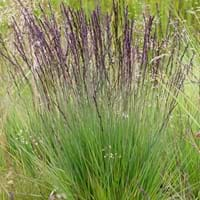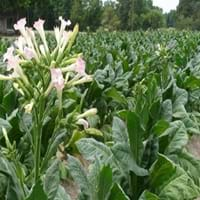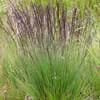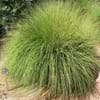Life Span
Perennial
Annual and Perennial
Type
Grass
Tender Perennial
Origin
Asia, Europe, North Africa
Central America, South America
Types
purple moor-grass 'Moorhexe', variegated purple moor-grass
Not Available
Habitat
Boggy areas, Dry and Young forest Heaths, Lowland
Cultivated Beds
USDA Hardiness Zone
4-8
10-11
AHS Heat Zone
9 - 1
Not Available
Sunset Zone
1a, 1b, 2a, 2b, 3a, 3b, 4, 5, 6, 7, 8, 9, 14, 15, 16, 17
H1, H2, 8, 9, 18, 19, 20, 21, 22, 23, 24
Habit
Clump-Forming
Upright/Erect
Flower Color
Dark Purple
Light Pink
Flower Color Modifier
Bicolor
Bicolor
Fruit Color
Non Fruiting Plant
Brown, Sandy Brown
Leaf Color in Spring
Green, Dark Green
Green
Leaf Color in Summer
Light Green
Green, Dark Green
Leaf Color in Fall
Green, Yellow green, Gold
Green, Dark Green
Leaf Color in Winter
Tan
Light Green
Leaf Shape
Needle like
Oblong elliptic
Plant Season
Spring, Summer, Fall, Winter
Spring, Summer, Fall
Sunlight
Full Sun, Partial Sun
Full Sun, Partial Sun
Type of Soil
Clay, Loam, Sand
Loam, Sand
The pH of Soil
Acidic, Neutral
Acidic, Neutral
Soil Drainage
Average
Well drained
Bloom Time
Late Spring, Summer, Late Summer, Early Fall, Fall
Early Summer, Summer
Tolerances
Not Available
Drought
Where to Plant?
Ground, Pot
Ground
How to Plant?
Divison, Transplanting, Vegetative Reproduction
Seedlings
Plant Maintenance
Low
Medium
Watering Requirements
Requires regular watering, Water more frequently during periods of extreme drought
Average Water Needs, Do Not over Water
In Summer
Lots of watering
Lots of watering
In Spring
Moderate
Moderate
In Winter
Average Water
Average Water
Soil pH
Acidic, Neutral
Acidic, Neutral
Soil Type
Clay, Loam, Sand
Loam, Sand
Soil Drainage Capacity
Average
Well drained
Sun Exposure
Full Sun, Partial Sun
Full Sun, Partial Sun
Pruning
Prune in winter, Remove damaged leaves, Remove dead branches, Remove dead leaves
Remove damaged leaves, Remove dead branches, Remove dead leaves
Fertilizers
No need to fertilize every year
Equal amount of N,P,K
Pests and Diseases
Pests and diseases free
Aphids, Black Shank, Brown Spots, Collar Rot
Plant Tolerance
Not Available
Drought
Flower Petal Number
Single
Single
Fragrant Bark/Stem
No
Yes
Foliage Texture
Fine
Coarse
Foliage Sheen
Matte
Matte
Attracts
Not Available
Wildlife
Allergy
Not Available
Dermatitis
Aesthetic Uses
Showy Purposes, Water gardening
Showy Purposes
Beauty Benefits
Not Available
Not Available
Environmental Uses
No fertilizer, pesticides, or herbicides needed
Air purification
Medicinal Uses
No Medicinal Use
Antispasmodic, Diuretic, Emetic, Expectorant, Homeopathy, Sedative
Part of Plant Used
Whole plant
Leaves, Seeds
Other Uses
Used as Ornamental plant
Used as an insecticide, Used as insect repellent, Used to make cigarettes and cigars
Used As Indoor Plant
No
No
Used As Outdoor Plant
Yes
Yes
Garden Design
Container, Foundation, Mixed Border
Mixed Border
Botanical Name
Molinia caerulea
NICOTIANA tabacum
Common Name
purple moor-grass
Smoking Tobacco
In Hindi
बैंगनी दलदल घास
Smoking Tobacco
In German
Pfeifengras
Rauchtabak
In French
pourpre lande-grass
Tabac fumeurs
In Spanish
púrpura amarra-hierba
fumar tabaco
In Greek
μωβ Moor-γρασίδι
Καπνός για κάπνισμα
In Portuguese
purple moor-grass
O fumo de tabaco
In Polish
fioletowy Moor-trawa
Palenie tytoniu
In Latin
Maurus herba-purpura,
Quisque Tobacco
Phylum
Magnoliophyta
Magnoliophyta
Class
Liliopsida
Magnoliopsida
Order
Cyperales
Solanales
Family
Poaceae
Solanaceae
Clade
Angiosperms, Commelinids, Monocots
Asterids, Eudicots
Tribe
Not Available
Nicotianeae
Subfamily
Not Available
Nicotianoideae
Number of Species
Not Available
Not Available
Season and Care of Molinia Caerulea and Smoking Tobacco
Season and care of Molinia Caerulea and Smoking Tobacco is important to know. While considering everything about Molinia Caerulea and Smoking Tobacco Care, growing season is an essential factor. Molinia Caerulea season is Spring, Summer, Fall and Winter and Smoking Tobacco season is Spring, Summer, Fall and Winter. The type of soil for Molinia Caerulea is Clay, Loam, Sand and for Smoking Tobacco is Loam, Sand while the PH of soil for Molinia Caerulea is Acidic, Neutral and for Smoking Tobacco is Acidic, Neutral.
Molinia Caerulea and Smoking Tobacco Physical Information
Molinia Caerulea and Smoking Tobacco physical information is very important for comparison. Molinia Caerulea height is 120.00 cm and width 30.00 cm whereas Smoking Tobacco height is 120.00 cm and width 40.60 cm. The color specification of Molinia Caerulea and Smoking Tobacco are as follows:
Molinia Caerulea flower color: Dark Purple
Molinia Caerulea leaf color: Green and Dark Green
Smoking Tobacco flower color: Light Pink
- Smoking Tobacco leaf color: Green
Care of Molinia Caerulea and Smoking Tobacco
Care of Molinia Caerulea and Smoking Tobacco include pruning, fertilizers, watering etc. Molinia Caerulea pruning is done Prune in winter, Remove damaged leaves, Remove dead branches and Remove dead leaves and Smoking Tobacco pruning is done Remove damaged leaves, Remove dead branches and Remove dead leaves. In summer Molinia Caerulea needs Lots of watering and in winter, it needs Average Water. Whereas, in summer Smoking Tobacco needs Lots of watering and in winter, it needs Average Water.





